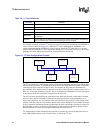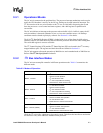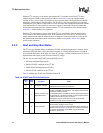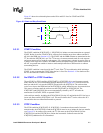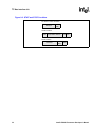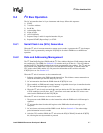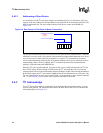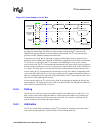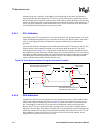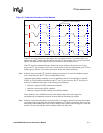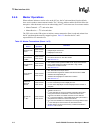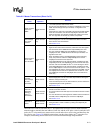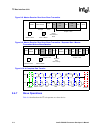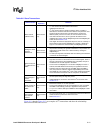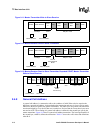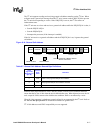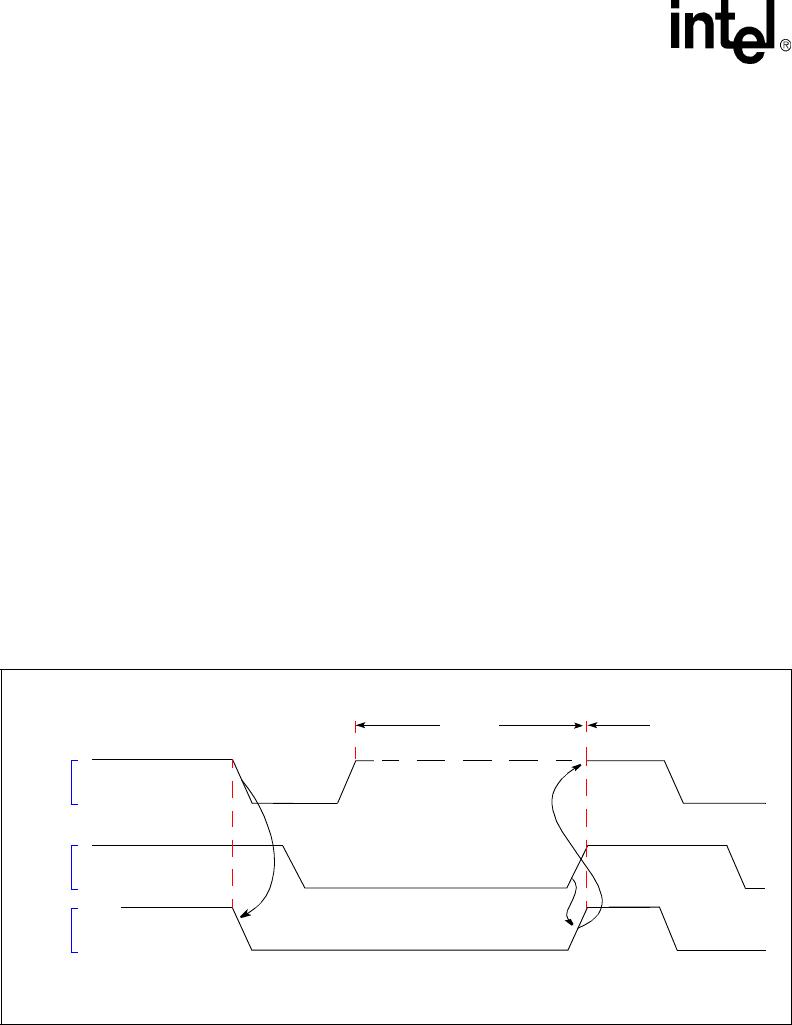
9-10 Intel® PXA255 Processor Developer’s Manual
I
2
C Bus Interface Unit
Arbitration can take a long time. If the address bit and the R/nW are the same, the arbitration
scheme considers the data. Because the I
2
C bus has a wired-AND nature, a transfer does not lose
data if multiple masters signal the same bus states. If the address and the R/nW bit or the data they
contain are different, the master signals a high state loses arbitration and shuts off its data drivers. If
the I
2
C unit loses arbitration, it shuts off the SDA or SCL drivers for the rest of the byte transfer,
sets the ISR[ALD] bit, and returns to slave-receive mode.
9.4.5.1 SCL Arbitration
Each master on the I
2
C bus generates its own clock on the SCL line for data transfers. As a result,
clocks with different frequencies may be connected to the SCL line. Because data is valid when a
clock is in the high period, bit-by-bit arbitration requires a defined clock synchronization
procedure.
Clock synchronization is through the wired-AND connection of the I
2
C interfaces to the SCL line.
When a master’s clock changes from high to low, the master holds down the SCL line for its
associated period (see Figure 9-6). A clock cannot switch from low to high if another master has
not completed its period. The master with the longest low period holds down the SCL line. Masters
with shorter periods are held in a high wait-state until the master with the longest period completes.
After the master with the longest period completes, the SCL line changes to the high state and
masters with the shorter periods continue the data cycle.
9.4.5.2 SDA Arbitration
Arbitration on the SDA line can continue for a long time because it starts with the address and R/
nW bits and continues through the data bits. Figure 9-7 shows the arbitration procedure for two
masters. More than two masters may be involved if more than two masters are connected to the
bus. If the address bit and the R/nW are the same, the arbitration scheme considers the data.
Because the I
2
C bus has a wired-AND nature, a transfer does not lose data if multiple masters
signal the same bus states. If the address and the R/nW bit or the data they contain are different, the
master that sent the first low data bit loses arbitration and shuts off its data drivers. If the I
2
C unit
loses arbitration, it shuts off the SDA or SCL drivers for the rest of the byte transfer, sets the
ISR[ALD] bit, and returns to slave-receive mode.
Figure 9-6. Clock Synchronization During the Arbitration Procedure
CLK2
SCL
Wait
State
Start Counting
High Period
CLK1
The first master to complete its high
period pulls the SCL line low.
The master with the longest clock
period holds the SCL line low.



